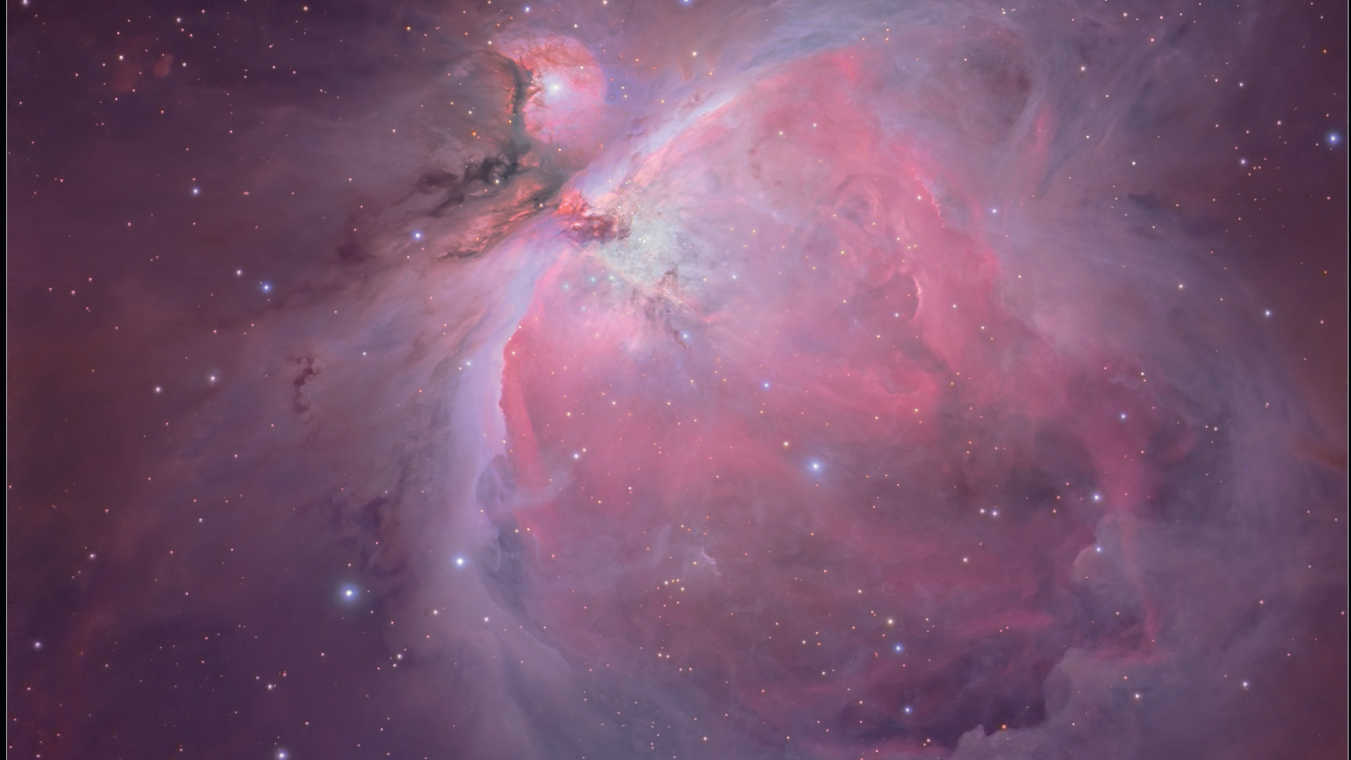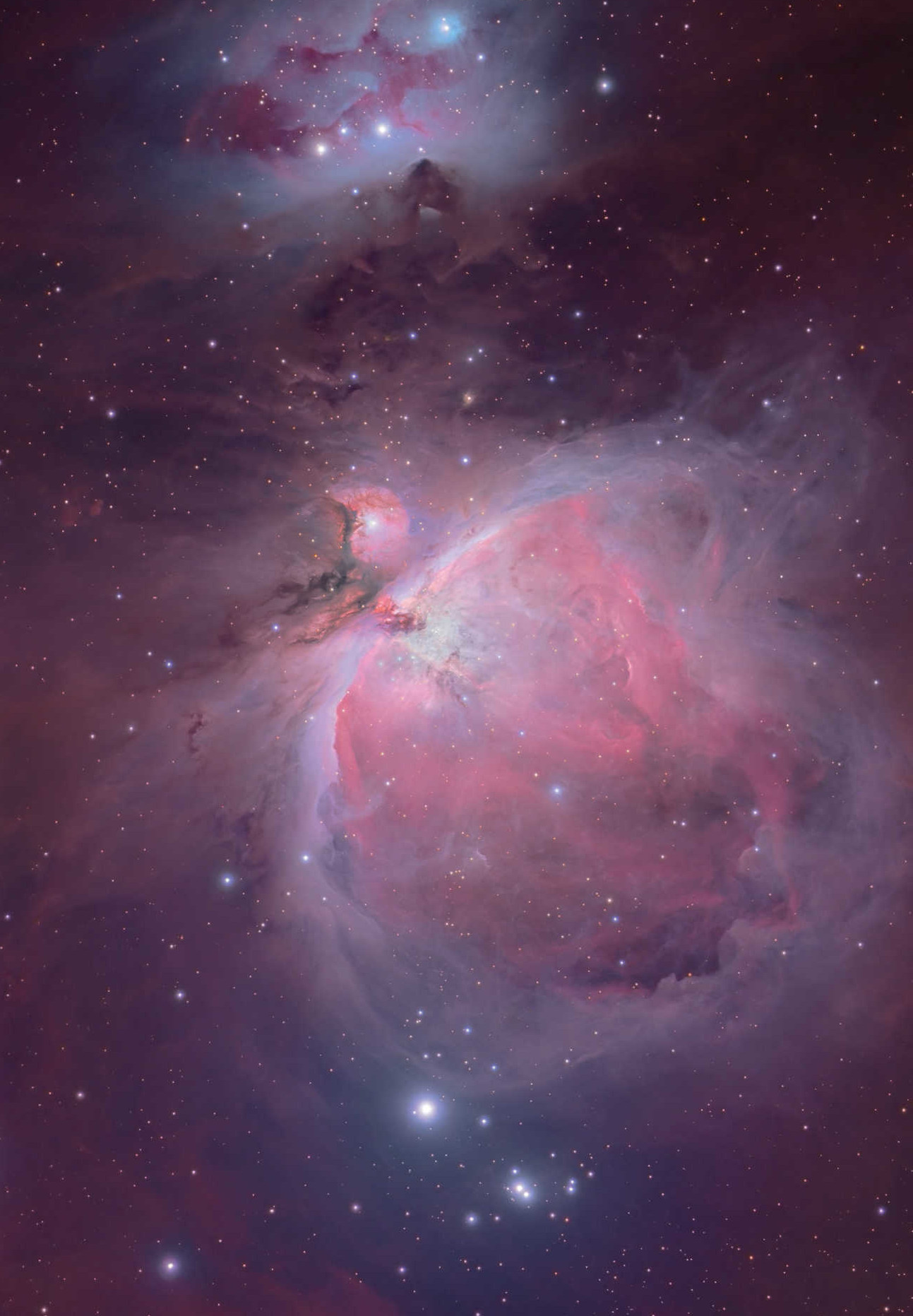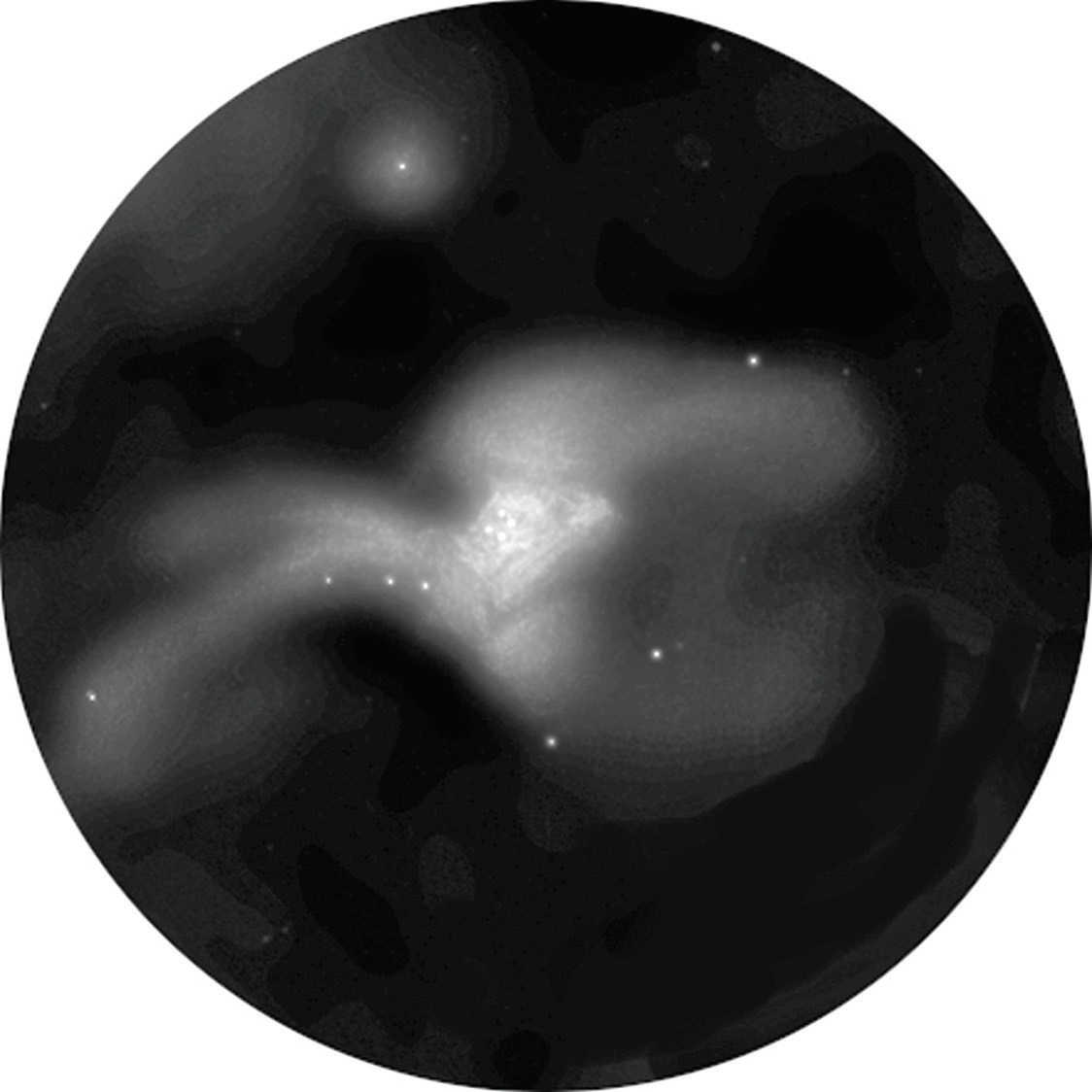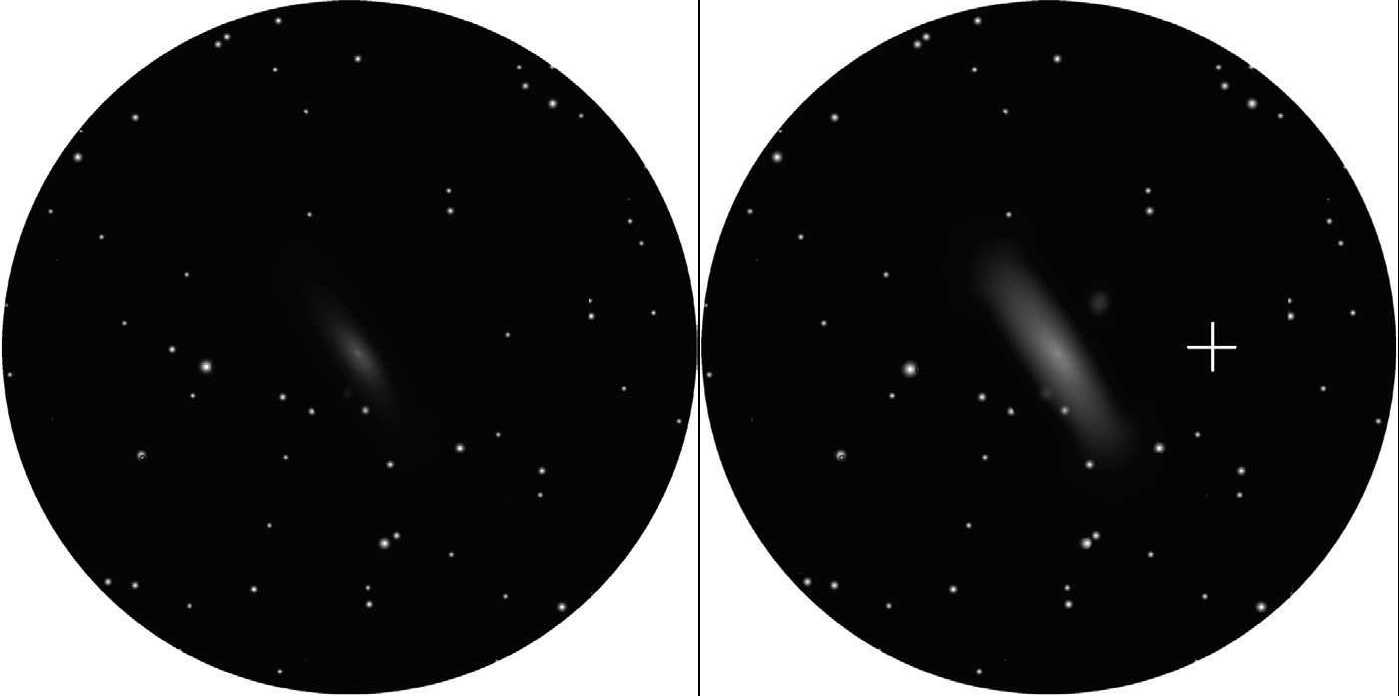Take a look!
Deep sky objects are often challenging. How dark skies and a few useful tips will ensure observing success.
 Mario Weigand
Mario Weigand“Correctly” observing deep sky objects
 The fantastic Orion Nebula inspires many amateur astronomers. Mario Weigand
The fantastic Orion Nebula inspires many amateur astronomers. Mario WeigandYou’ve set up your new telescope, the sky is clear and, full of anticipation, you line up your first celestial object. But disillusionment often follows: you can’t find any of the eagerly awaited objects - or the view is simply disappointing.
Today's astronomy photographs depict deep sky objects with fantastic details and brilliant colours. The Orion Nebula M 42 appears as a richly structured, bright red nebular landscape with an obvious glowing central region. But the reality is quite different and no telescope can reproduce a view like this. As seen through a telescope, nebulae and galaxies usually appear as pale and colourless structures at first glance, and only reveal their details with the "correct" observation technique.
The darker, the better
"Nothing is better than a dark sky" – you’ll often hear or read this. And it’s correct. A dark place well away from the city is a prerequisite for successfully observing faint objects. Also, the Moon should not interfere with the observation. Our pupils dilate in seconds in the dark. However, the actual brightness adjustment is controlled by a biochemical process in the retina, this process is called dark adaptation. It takes around 30–45 minutes for optimal sensitivity to be reached in the dark. Bright light sources such as street lights, car headlights, torches or laptop screens should be avoided during and after dark adaptation. Once they eyes are adapted, only special red light astronomy torches should be used.
Patience is needed
Patience is a required virtue for the hobby astronomer. Especially with faint targets such as nebulae and galaxies, the observer should give the object a least ten minutes to properly observe it. This is because some of the finer details only become visible after a period of careful observation. Then objects that, at first glance, appeared monotone, reveal structures such as bright compact regions or spiral arms.
Observing tricks
 The Orion Nebula is a wonderful object through a telescope: the view of M 42 in a reflector with a 150mm aperture. L. Spix
The Orion Nebula is a wonderful object through a telescope: the view of M 42 in a reflector with a 150mm aperture. L. SpixNevertheless, some structures appear so faint that they can only be made visible by using a particular trick. This relies on the fact that the human eye perceives light with two different types of sensory cells: the cone and the rod. The cones are concentrated in the middle of the retina and are responsible for colour and sharp vision. The more light-sensitive rods, on the other hand, are spread over a larger area of the retina and deliver a rather blurry monochrome image. This light-sensitive area can be used for observation by not looking directly at the object, but rather looking slightly beyond it. This technique is known as indirect vision. Thereby light meets the rods beyond the centre of the retina and the fainter structures of nebulae and galaxies become visible. This trick also helps us observe clusters, since it helps us to better see even the fainter stars.
Shaking with a purpose
Structures that are at the limit of perception can be made visible using another observation technique. The eye can see moving objects more easily than those that are stationary. We can take advantage of this effect when observing by moving the telescope slightly back and forth, thereby simulating movement. This method, known as field sweeping, can be very promising for observing very faint structures, especially in combination with indirect vision. With time and practice, you will learn to better apply these observation tricks, so that disappointing observation nights should soon be a thing of the past.
 With indirect vision (right), the Andromeda galaxy M 31 is also visible. The cross marks a possible fixation point for the observing eye. L. Spix
With indirect vision (right), the Andromeda galaxy M 31 is also visible. The cross marks a possible fixation point for the observing eye. L. SpixAuthor: Lambert Spix / Licence: Oculum Verlag GmbH
